Space-m17-blog - SpaceForLife

More Posts from Space-m17-blog and Others
Ten Years After Katrina

As we remember the devastation that Hurricane Katrina caused ten years ago, we also look to the improvements made in the past decade in storm prediction and forecasting.
Hurricane Katrina impacted many people, businesses and communities; and even two NASA facilities were hit by the storm. Marshall Space Flight Center and Michoud Assembly Facility were both hit by the harsh storm (seen below).

During Hurricane Katrina in 2005, our satellites were hard at work monitoring and watching the storm from above. Thanks to the higher resolution models we have today, simulations can recreate historical storms, like the below of Hurricane Katrina. Scientists can then study these and learn about past events.

Surprisingly, the United States hasn’t experienced the landfall of a Category 3 hurricane or lager since 2005. This is the longest period of time that has passed without a major hurricane making landfall in the U.S. since reliable records began in 1850.

Although we don’t know when a severe storm will form, we do know that advancements in technology can help us better prepare and predict its path. So, on this ten year mark of this devastating storm, we look back to remember what we saw: https://www.flickr.com/photos/gsfc/sets/72157656646633089
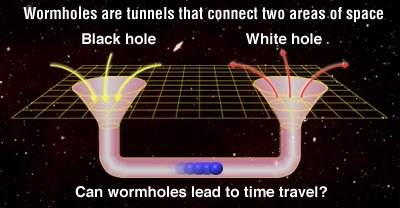
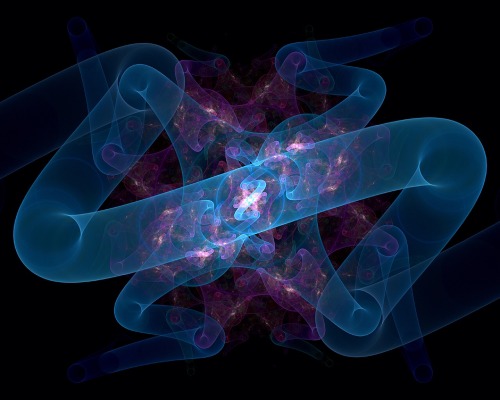
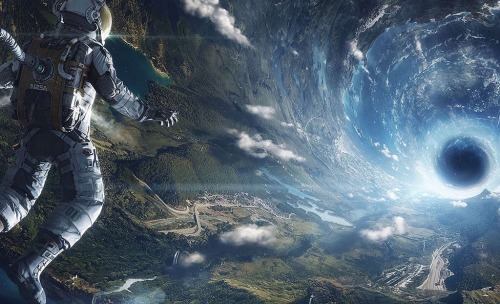
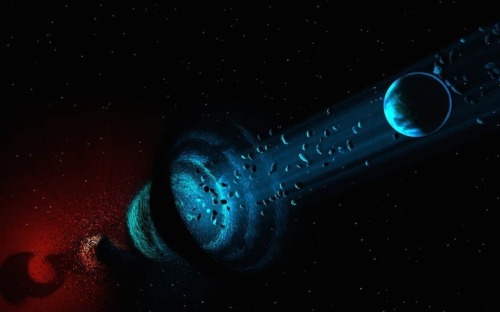
Wormholes
Also known as Einstein-Rosen Bridges are theoretically possible going by Einstein’s theory, and equations of general relativity. Basically wormholes take advantage of our 3 dimensional space and are able to “bend” it. Picture a sheet of paper; now put two circular holes on each end of that sheet of paper. Normally the quickest way to join one point to the other would be to draw a straight line between them. Now instead, you could fold the piece of paper so each hole is touching meaning that there is no longer any distance between them. This is an analogy of how a wormhole works except instead of a circular hole on a 2D plane, the entry and exit points of an Einstein-Rosen bridge can be visualised as spheres in a 3D space.
While the theory of general relativity allows the existence of wormholes, we have not yet found physical evidence. The first wormhole solution discovered was the Schwarzschild wormhole presented in the Schwarzschild metric describing an eternal black hole. However this is not stable enough and would collapse before anything could cross from one end to the other. Traversable wormholes could exist of there was a form of exotic matter with a negative energy to stabilise them.
The Casmir effect shows that quantum field theory allows the energy density in some space to be relatively lower than the ordinary vacuum of space. A lot of physicists (like Stephen Hawking) use this to argue that it is possible to stabilise a traversable wormhole. However there are no known natural processes that would cause a traversable wormhole to stabilise.
The quantum foam hypothesis can be used to suggest the spontaneous appearance of tiny black holes at the Planck scale. Stable versions of these tiny wormholes have been suggested as dark matter candidates. It is also possible that one of these wormholes opened into a previously empty space from another universe, held open by a cosmic string (1D string) with a negative mass then it could be inflated to a macroscopic size by cosmic inflation. Is it possible this happened at the start of the Big Bang?

Interstellar bow
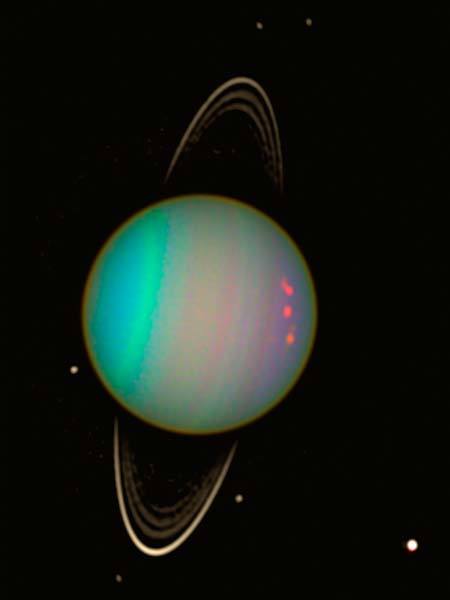
Rings and Moons Circling Uranus, taken by Hubble space telescope.
js
New Video! What is an Elliptical Galaxy?
Follow Evanthorizon for more astronomy posts!
You should do your job in such a fashion that others can build on top of it, so they will indeed say, “Yes, I’ve stood on so and so’s shoulders and I saw further.” The essence of science is cumulative. By changing a problem slightly you can often do great work rather than merely good work. Instead of attacking isolated problems, I made the resolution that I would never again solve an isolated problem except as characteristic of a class.
“You and Your Research,” Dr. Richard W. Hamming of Bell Labs (via ryanandmath)


Saturn and his moon Titan

Northern lights (by Teemu Lautamies)
Normal Things…Done in a Not So Normal Way
Floating around in zero gravity may sound like a blast, but it can actually present a lot of challenges to things we do everyday here on Earth with little to no thought. Here are a few ways that astronauts on the International Space Station complete normal tasks in orbit:
1) Washing Hair

You can’t just have a shower on the space station because the water would come out of the faucet and float all over the place. In this video, NASA Astronaut Karen Nyberg demonstrates how she uses a bag of water, no rinse shampoo, a towel and her comb to wash her hair.
2) Drinking Coffee

Believe it or not, there are special cups used on the space station to drink coffee from the new ISSpresso machine. I mean, you wouldn’t want hot coffee floating around in the air…would you? Previously, astronauts drank coffee from plastic bags, but let’s face it, that sounds pretty unenjoyable. Now, there are zero Gravity coffee cups, and an Italian espresso machine aboard the International Space Station! These cups were created with the help of capillary flow experiments conducted in space.
3) Sleeping

There’s nothing like crawling into bed after a long day, but astronauts can’t exactly do that while they’re in microgravity. Instead of beds, crew members use sleeping bags attached to the walls of their small crew cabins. They are able to zipper themselves in so that they don’t float around while they’re asleep. This may sound uncomfortable, but some astronauts, like Scott Kelly, say that they sleep better in space than they do on Earth!
4) Exercising

Exercising in general is an important part of a daily routine. In space, it even helps prevent the effects of bone and muscle loss associated with microgravity. Typically, astronauts exercise two hours per day, but the equipment they use is different than here on Earth. For example, if an astronaut wants to run on the treadmill, they have to wear a harness and bungee cords so that they don’t float away.
-
 underzemilkyway reblogged this · 1 year ago
underzemilkyway reblogged this · 1 year ago -
 themindofmims liked this · 2 years ago
themindofmims liked this · 2 years ago -
 medusaveneno reblogged this · 2 years ago
medusaveneno reblogged this · 2 years ago -
 youngeastafricanqueen reblogged this · 2 years ago
youngeastafricanqueen reblogged this · 2 years ago -
 sophisticatedexuberance reblogged this · 2 years ago
sophisticatedexuberance reblogged this · 2 years ago -
 sophisticatedexuberance liked this · 2 years ago
sophisticatedexuberance liked this · 2 years ago -
 wealignourselfevencloser reblogged this · 2 years ago
wealignourselfevencloser reblogged this · 2 years ago -
 airesbrown reblogged this · 2 years ago
airesbrown reblogged this · 2 years ago -
 vaniliaaa liked this · 3 years ago
vaniliaaa liked this · 3 years ago -
 r3ap3rz-ros3 liked this · 4 years ago
r3ap3rz-ros3 liked this · 4 years ago -
 gheffirasyahputri liked this · 4 years ago
gheffirasyahputri liked this · 4 years ago -
 raizinha15-blog liked this · 7 years ago
raizinha15-blog liked this · 7 years ago -
 modswing reblogged this · 8 years ago
modswing reblogged this · 8 years ago -
 quantoseiselma liked this · 8 years ago
quantoseiselma liked this · 8 years ago -
 luciancaelum16 reblogged this · 8 years ago
luciancaelum16 reblogged this · 8 years ago -
 luciancaelum16 liked this · 8 years ago
luciancaelum16 liked this · 8 years ago -
 mia-nova liked this · 8 years ago
mia-nova liked this · 8 years ago -
 furryball reblogged this · 8 years ago
furryball reblogged this · 8 years ago -
 rivermusic liked this · 8 years ago
rivermusic liked this · 8 years ago -
 yrrehcekoc reblogged this · 8 years ago
yrrehcekoc reblogged this · 8 years ago -
 du-bist-es-blog liked this · 8 years ago
du-bist-es-blog liked this · 8 years ago -
 violetablood reblogged this · 9 years ago
violetablood reblogged this · 9 years ago -
 differentalways88 reblogged this · 9 years ago
differentalways88 reblogged this · 9 years ago -
 stupid-robot-girl liked this · 9 years ago
stupid-robot-girl liked this · 9 years ago -
 protectfelix reblogged this · 9 years ago
protectfelix reblogged this · 9 years ago -
 deadvoicesmedia liked this · 9 years ago
deadvoicesmedia liked this · 9 years ago -
 duglegur reblogged this · 9 years ago
duglegur reblogged this · 9 years ago -
 thatcasj reblogged this · 9 years ago
thatcasj reblogged this · 9 years ago -
 spacebouquet reblogged this · 9 years ago
spacebouquet reblogged this · 9 years ago -
 martianboogie reblogged this · 9 years ago
martianboogie reblogged this · 9 years ago -
 little-miss-capricorn reblogged this · 9 years ago
little-miss-capricorn reblogged this · 9 years ago -
 constant-clouds reblogged this · 9 years ago
constant-clouds reblogged this · 9 years ago -
 sayonara97 reblogged this · 9 years ago
sayonara97 reblogged this · 9 years ago -
 nothingsacred reblogged this · 9 years ago
nothingsacred reblogged this · 9 years ago -
 mirandaguadalupe reblogged this · 9 years ago
mirandaguadalupe reblogged this · 9 years ago -
 etaceti reblogged this · 9 years ago
etaceti reblogged this · 9 years ago -
 ronniebot liked this · 9 years ago
ronniebot liked this · 9 years ago -
 withacupofcoffee reblogged this · 9 years ago
withacupofcoffee reblogged this · 9 years ago -
 withacupofcoffee liked this · 9 years ago
withacupofcoffee liked this · 9 years ago -
 prettyybluueeyes reblogged this · 9 years ago
prettyybluueeyes reblogged this · 9 years ago -
 prettyybluueeyes liked this · 9 years ago
prettyybluueeyes liked this · 9 years ago -
 kalikurl liked this · 9 years ago
kalikurl liked this · 9 years ago -
 outer-space-aliens reblogged this · 9 years ago
outer-space-aliens reblogged this · 9 years ago
I love space. I've been to space camp in Huntsville Alabama and I am planning on going every summer. I look forward to be an astronaut for nasa on the sls that is planned to be launched 2018. And the manned mission 2030. So yeah I won't let anything get in my way.
138 posts